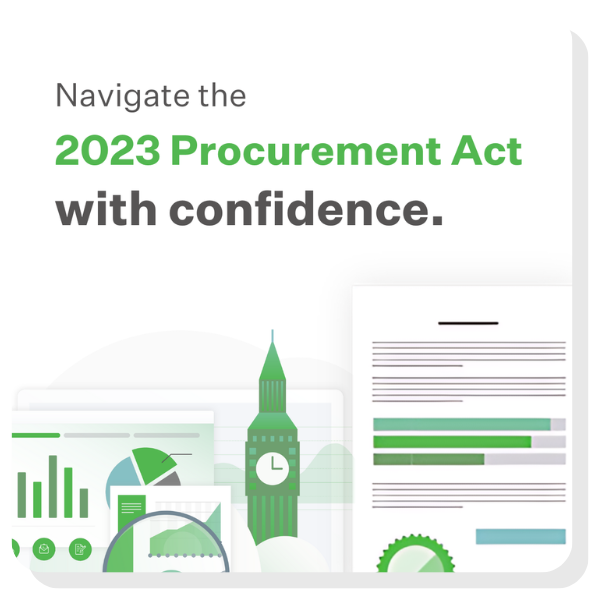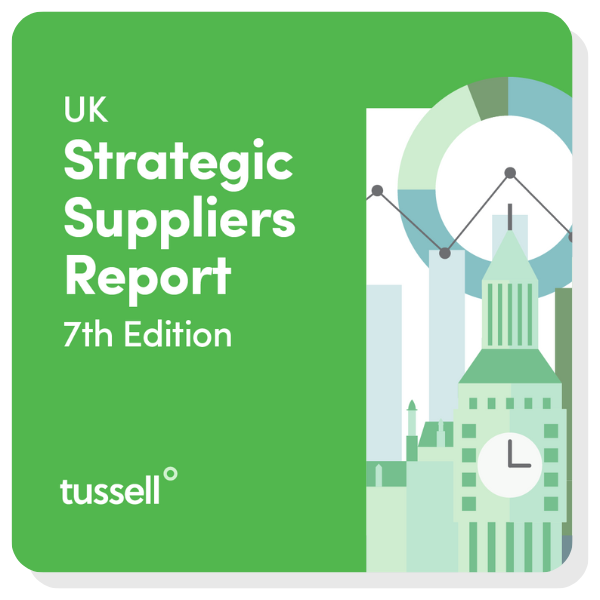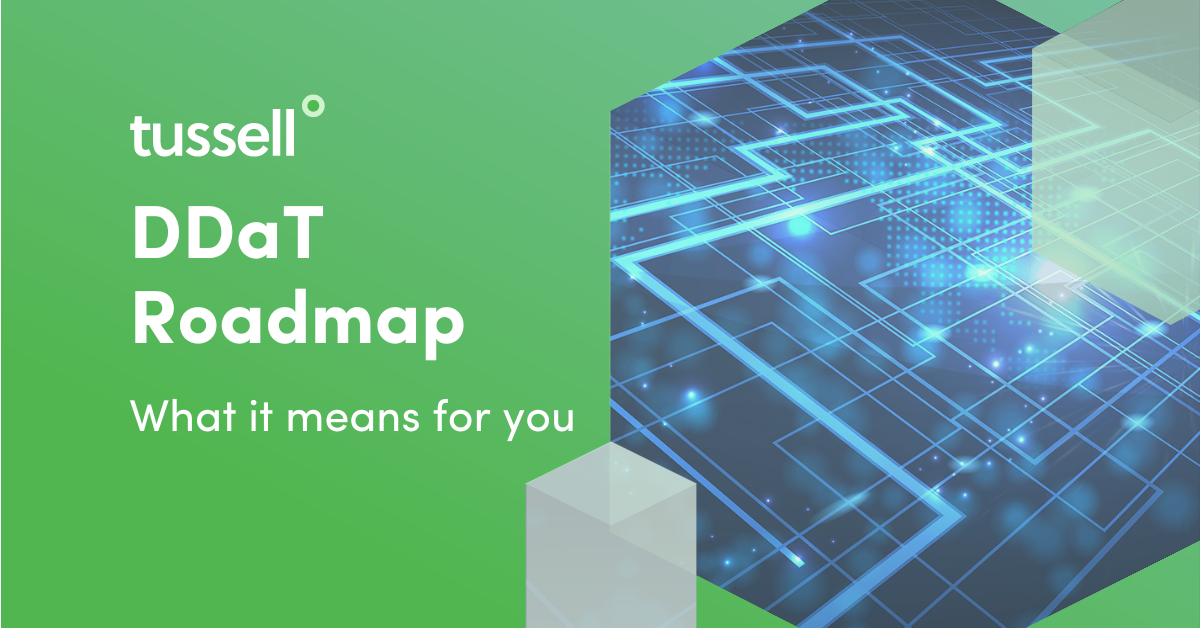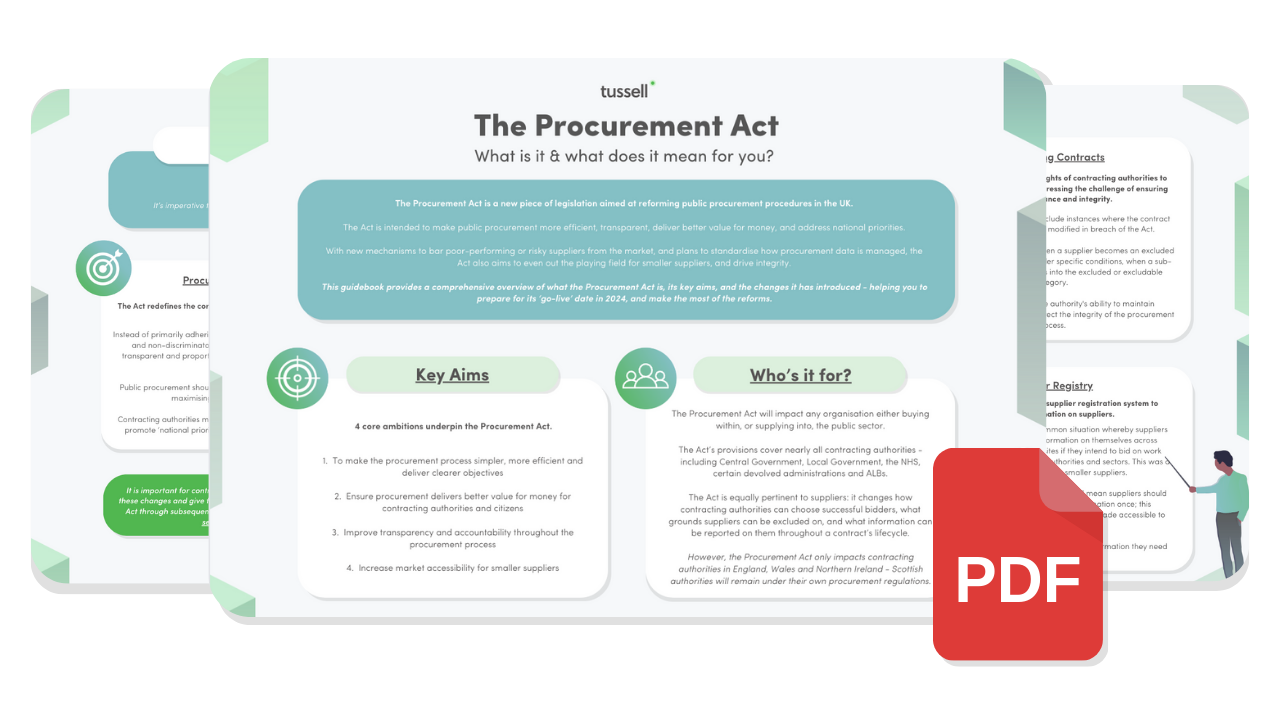The government's new policy paper Transforming for a digital future: 2022 to 2025 roadmap for digital and data was published on 9th June 2022 as part of the government's ongoing aims and efforts to deliver digital transformation that has a real impact on citizens' lives.
"It represents a new era of collaboration on digital transformation and marks a step-change in the digital and data agenda." - Paul Willmott, Executive Chair of the Central Digital and Data Office.
In this blog, we've looked at the strategy's aims, summarised the key points and looked at what the DDaT Roadmap means for you as a supplier.
Jump ahead to read about:
Background & Context
The DDaT Roadmap presents a comprehensive vision and specific actions for achieving digital transformation in the government by 2025.
It addresses previous shortcomings in past strategies by emphasising collaboration, clear accountability, and ownership. The establishment of the Central Digital and Data Office (CDDO) marks a new era of transformation, with strong leadership and involvement from senior government officials and digital experts.
The commitments outlined in the roadmap are concrete, measurable, and ambitious, yet realistic, with robust plans to monitor and support progress across all departments. While primarily focused on Central Government, efforts are underway to engage Local Government and devolved administrations to align their plans with the roadmap and promote collaboration. The CDDO is working closely with these entities to ensure coordination and synergy between their existing plans and the government's vision.
Improving the government's use of digital and data is fundamental for achieving ambitious priorities like Net Zero and Levelling Up. Embracing digital transformation and effective data flows can lead to greater efficiency, cost savings, and improved decision-making.
Current situation:
The UK government shows that it has made significant strides in digital, data, and technology initiatives in the past decade, with effective teams delivering digital services, managing technology estates, and responding to citizen needs. Investments in innovative technologies have been made, exemplified by programs like the National Digital Twin and blockchain integration.
However, the government feels that challenges persist, including slow and costly services, duplication of identity solutions, limited data sharing, outdated technology, talent attraction issues, and a lack of digital leadership skills. As a result, the government says it is committed to addressing these challenges through substantial financial investments and a pledge of £8 billion for digital transformation by 2025. This funding aims to replace outdated systems, improve services, and align with agile delivery methods.
Aims for 2025:
According to the roadmap, the UK government aims to have a transformed and efficient digital government that delivers better outcomes for all by 2025. Their aims can be categorised into 3 key areas:
1. Exceed public expectations by developing user-centric policies and services that are efficient, tailored to user needs, and yield desired outcomes.
2. Equip civil servants with digital capabilities, ensuring they have access to the necessary data and tools for effective digital delivery.
3. Enhance government efficiency and security by promoting a more integrated and streamlined approach, using common building blocks to deliver services rapidly, cost-effectively, and securely. This will be mainly achieved through digital innovation.
Roadmap Summary
By 2025, the roadmap hopes to address the challenges and shortcomings of previous digital transformation attempts, focusing on collaboration, specific actions, and accountability across all government departments.
It sets out six cross-government missions to achieve its vision for 2025, as well as highlighting the potential savings and efficiencies that can be achieved through digital transformation, such as eliminating paper-based processes, reducing attrition rates, and optimising technology procurement.
Key changes :
The document outlines 6 missions that would in turn bring key changes:
-
Transformed Public Services: The government aims to improve public services by achieving the "great" standard for user efficiency evaluation for at least 50 of the top 75 identified services by 2025. This involves measuring service performance consistently and embedding digital approaches and cross-functional teams into policy design and delivery.
-
One Login for Government: Further to this, the government wants to establish a unified login system for all departments by 2025. This initiative aims to simplify access to government services by enabling users to have a single login credential across different platforms.
-
Better Data for Decision Making: The third mission is to improve data accessibility, quality, and sharing across departments. This includes making critical data assets available through trusted APIs and platforms, developing a Data Marketplace, adopting a single data ownership model, and resolving high-priority data quality issues.
-
Efficient, Secure, and Sustainable Technology: The government aims to optimise technology usage by promoting a "buy once, use many times" approach, leveraging a common code, pattern, and architecture repository. They also plan to conduct resilience testing for nationally important systems and align hosting with the cross-government cloud and technology infrastructure strategy.
-
Digital Skills at Scale: By recognising the need to enhance digital capabilities within the civil service, efforts will be made to upskill civil servants in digital capabilities and digital delivery, providing them with the necessary tools and data access to perform their jobs effectively.
-
System for Digital Transformation: Finally, to establish a system that supports and enables digital transformation. This includes creating clear lines of accountability and business ownership, fostering collaboration and innovation, and incentivising agile delivery methodologies.
Progress & tracking progress:
The Digital and Data Board, comprised of Permanent Secretaries, has developed a roadmap that will be governed by the board itself, with regular progress reviews (every 6 months) and monitoring of efficiency savings. Each mission within the roadmap is led by a Permanent Secretary and overseen by a steering group of senior civil servants.
All departments share responsibility for implementing the plan. Department-level targets will be established to measure progress on cross-government commitments, and Quarterly Business Reviews will be conducted to track key performance indicators and efficiency savings.
The CDDO's spend controls function will collaborate with departments and HM Treasury to align spend approval criteria with the roadmap, ensuring that approved spending supports the strategy missions and departmental priorities.
What it means for Suppliers
For suppliers in the public sector, this roadmap signifies a significant opportunity and shift in the way government services are delivered. The government is emphasising the need for digital transformation and the use of innovative technology to improve public services and make them more efficient, user-centric, and cost-effective.
Suppliers in the public sector can expect an increased demand for their services and solutions that align with the government's digital agenda. The roadmap highlights the need for improved data quality, better data sharing between departments, and the adoption of common technology solutions.
The roadmap also emphasises the importance of collaboration between government departments and suppliers. It calls for a joint effort to deliver on the commitments and actions outlined in the roadmap.
Overall, the government's roadmap presents opportunities for suppliers who can offer expertise in areas such as data management, cybersecurity, digital service design, and technology procurement with an opportunity to provide innovative solutions and collaborate with the government in delivering digital transformation.
Concluding Remarks
In conclusion, the government's roadmap for digital and data presents a clear vision and actionable plan to achieve comprehensive digital transformation in the public sector by 2025. It addresses previous shortcomings and emphasises collaboration, accountability, and ownership, with the involvement of senior government officials and digital experts through the CDDO.
By pursuing these objectives, the government aims to exceed public expectations, equip civil servants with digital capabilities, and enhance government efficiency and security. The roadmap highlights the potential for significant savings, increased efficiency, and improved decision-making through digital transformation. It also recognises the importance of engaging suppliers to provide expertise in data management, cybersecurity, digital service design, and technology procurement.
Suppliers have an opportunity to play a crucial role in this transformation by offering innovative solutions and collaborating with the government to deliver on its digital agenda. Collaboration between government and suppliers will be key to delivering on the roadmap's commitments and shaping the future of public services.
Keep an eye out on the government website and the Tussell website to monitor the progress of this policy paper and keep on top of the changes that this paper may bring.
*
To find out more about digital transformation in the public sector tech market, check out our Tech200 list - the fastest-growing technology companies in the UK public sector, from FY 2020/21 to FY 2021/22.
Tussell's market intelligence platform is already being used by suppliers to track new opportunities in their sectors, dig into their target accounts, see who their competitors are working with, and understand which frameworks they should get onto to win more work.
Book a personalised demo with our team to see how Tussell can unlock public sector insights and opportunities for your business.

















